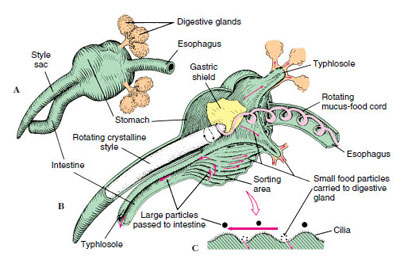
There are many species of clams living in Barnegat Bay.
Hard Clam or Northern Quahog Mercenaria mercenaria
Hard clams can be found throughout Barnegat Bay
In winter, when the water temperature get below 50° Fahrenheit, clams burrow into the bay bottom where they remain until the following spring when the water temperatures rise and the breeding cycle begins. <more information>
 Clams survive by getting oxygen and food from the waters of the bay. As the bay warms up the nutrients become more plentiful.
Clams survive by getting oxygen and food from the waters of the bay. As the bay warms up the nutrients become more plentiful.
This includes phytoplankton (algae) that is the principal food for clams.
The smallest juvenile clams raised for aquaculture are called seed clams. They can range from the size of a grain of sand to about 1/4 ” (.25 inch).
Hard clams have been harvested and sold for many, many years. Instead of referring to the size of the clam by measurement (inches or millimeters/centimeters), calms can be purchased in seafood stores by commercial names referring to the following sizes:
Little Neck – small and tender they are usually steamed open or eaten on the half shell.
Top Neck – typically eaten raw on the half shell, grilled open or as a baked clam appetizer
Cherrystone – eaten raw or most often used for baked clam appetizers such as clams casino
Chowder – the largest and toughest hard clams. usually wind up in chowders
Other sizes that are not as commonly used are:
Pasta Necks (or Spaghetti clams) – smaller than Little Necks, they are tender and easy to digest.
Their delicate flavor goes well in light sauces, pasta or rice dishes including Paella.
Since they are less than an inch and a half they may not be legally harvested in New Jersey.
Middle Necks (or Specials) – a size in between Little Necks and Top Necks.
Preferred at Raw Bars because they have more meat than little necks yet still tender.
Fun Fact – The term “Cherrystone Clam” comes from Cherrystone Creek, Virginia
Fun Fact – From the 1860s through the 1890s, small hard clams from Little Neck Bay in Queens, New York (Long Island) were served in the restaurants of New York City and called “Littlenecks” or “littleneck clams”.
Eventually, the term came to be used as a size category for all hard clams, regardless of origin.

